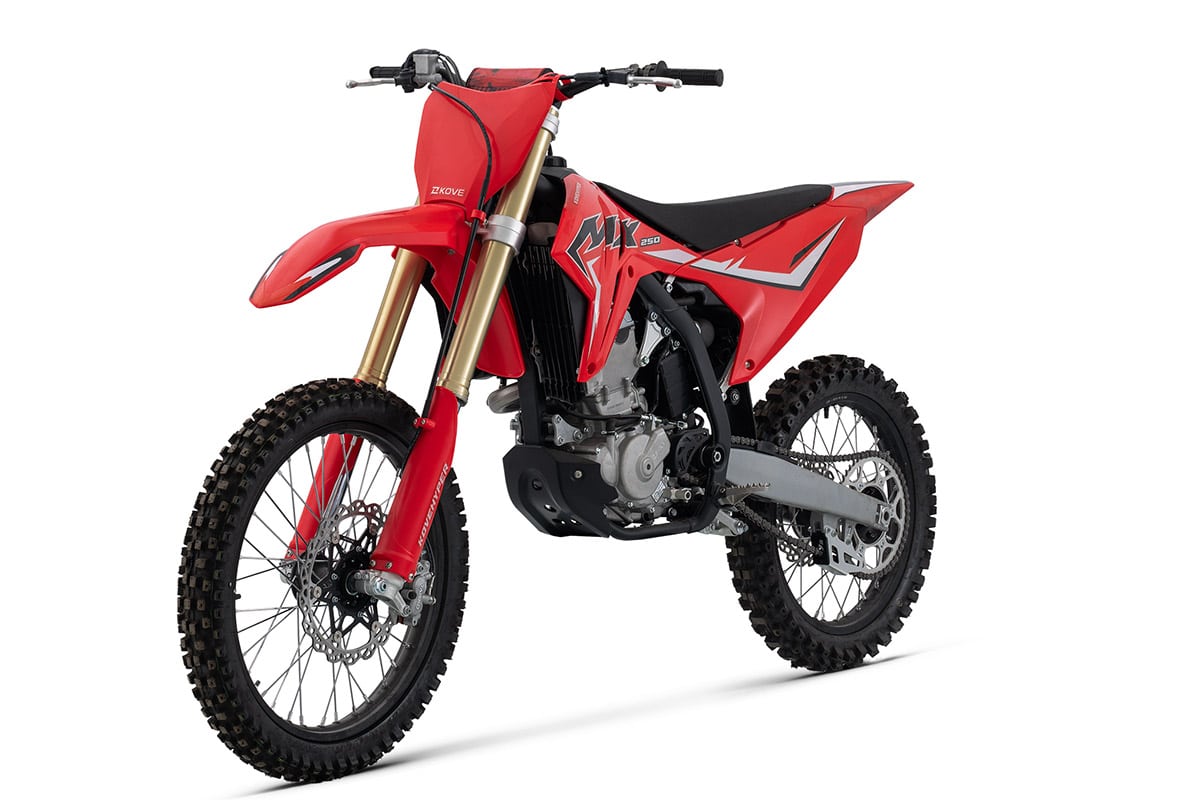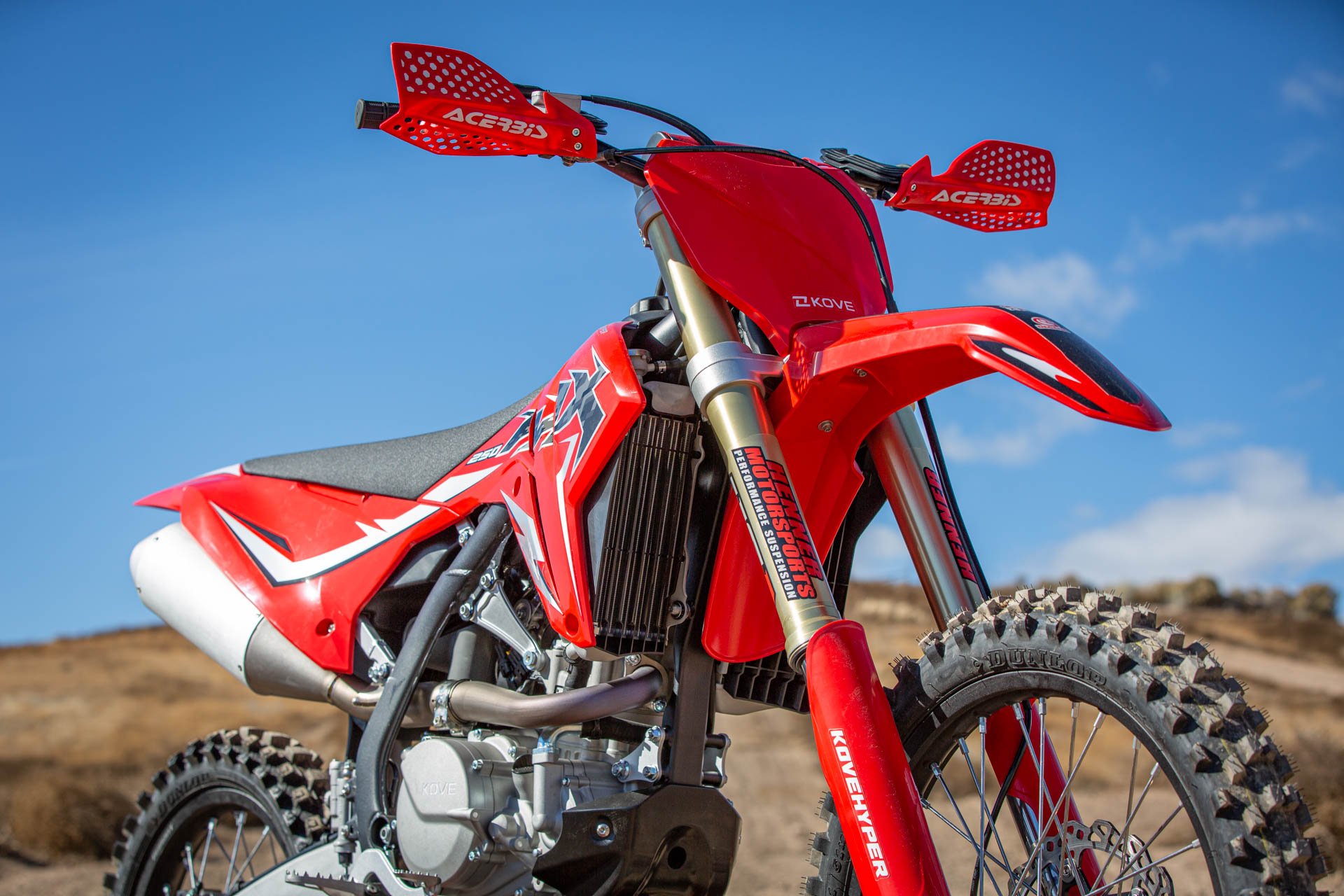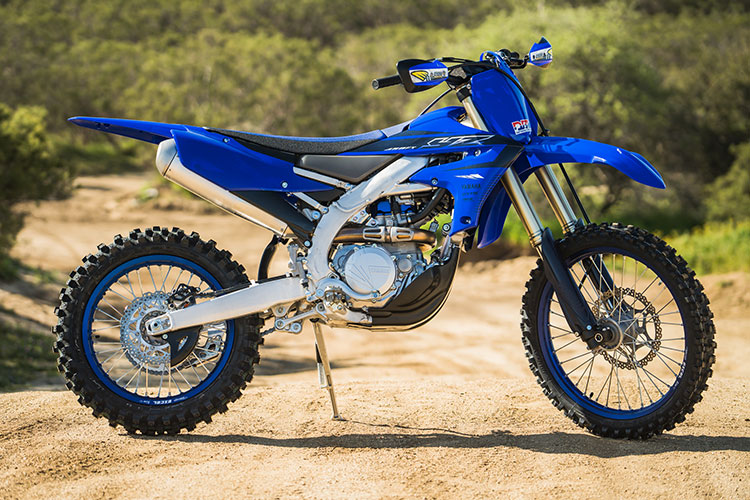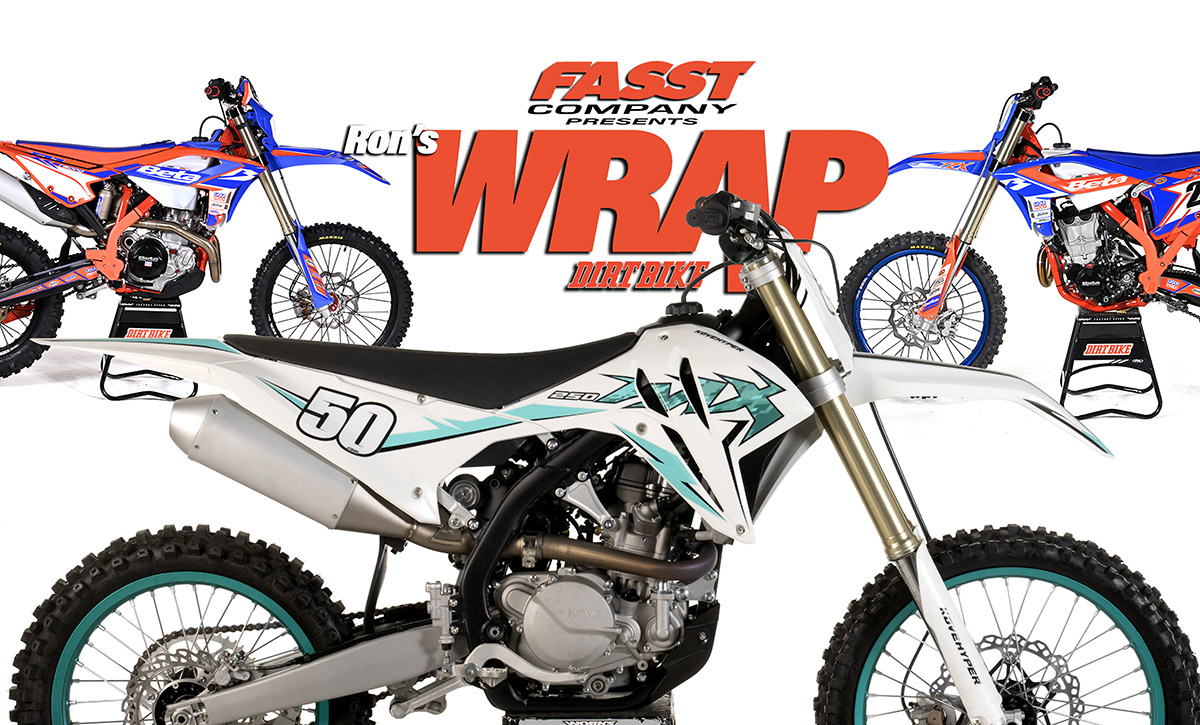What a whirlwind of a week it has been, and the excitement only continues to ramp up—last week kicked off with my inaugural ride on the Kove MX250. Following that, I found myself in South Carolina, where I had the opportunity to test-ride both the new Yamaha YZ450FX and the unchanged YZ125X and YZ250X models.
From there, it was straight into the opening round of the GNCC season aboard the 450. Upon returning home, I wasted no time in taking the new Beta 450RX motocross bike out for its maiden spin.
Wednesday brought the Beta Trials Press challenge up at Motoventures, and tomorrow promises another thrilling adventure as I join Rodney Smith to compare four different Beta Race Editions (350RR, 390RR, 430RR, and 480RR).
And on Monday, Mark Tilley heads to Florida to test ride the new Triumph TX250. All these experiences will be meticulously chronicled in the upcoming May print issue of Dirt Bike.

Let’s talk numbers – the Kove MX250 is priced at $5999.
First and foremost, the Kove MX250 is undeniably impressive. It marks a significant milestone as, to the best of my knowledge, it stands as the first bona fide motocross bike to emerge from China.
Unlike many other bikes originating from mainland Asia, which often mimic existing designs, the Kove asserts its individuality.
Engineered with a DOHC six-speed motor, developed in collaboration with nearby Zongshen, the Kove showcases its prowess with components such as the top end and clutch, predominantly manufactured in-house.
Suspension duties are entrusted to another Chinese firm, Yu An, while the brakes hail from yet another Chinese manufacturer, Taisko. Virtually all components are sourced domestically, enabling the Kove to maintain an appealing price point of $5999.
Now, onto the riding experience. The Kove surprises with its familiarity and comfort. From the ergonomics of the seat and handlebars to the overall riding position, everything feels contemporary and ergonomic.
This defies expectations, as bikes from mainland Asia often exhibit unconventional layouts. A brief sit on the Kove would easily convince one of its resemblance to a Honda. Starting the engine is a breeze, and its sound mirrors that of any other 250cc motocross bike.

In terms of performance, the Kove finds itself slightly trailing behind its counterparts in the 250 race bike category, a fact acknowledged candidly by importers in Utah.
It weighs approximately 5 percent more than its competitors (237 pounds without fuel compared to 227 for a Husky FC250) and delivers roughly 17 percent less horsepower (37.5 versus 44.4 for the Husky). However, these figures don’t dominate the riding experience.
The Kove revs are akin to any modern 250, with power concentrated primarily in the higher rev range. Negotiating the track requires pushing the bike to its limits, much like any other 250.
It handles jumps and hills with ease, exuding a sense of familiarity. Even the suspension, courtesy of Yu An, and the shock, equipped with clickers, feels remarkably conventional. A minor adjustment of the clickers rendered the suspension balanced, dispelling initial concerns of overdamping.
One of the foremost concerns regarding products from mainland Asia revolves around reliability. During one particularly muddy test day at Glen Helen, where abusive clutching was the norm to navigate the track, the Kove remained unfazed.
While other bikes succumbed to overheating due to clogged radiators, the Kove soldiered on. Its resilience left a lasting impression.
However, it’s essential to acknowledge that conceding a 7 horsepower deficit in the fiercely competitive 250 class renders the Kove unsuitable for championship contention.
Nonetheless, it shines as an excellent practice, recreational, and trail-riding companion. While Kove may not yet rival established brands on the track, the allure of its affordability remains undeniable.
Moving on to Yamaha’s off-road lineup, the testing ground shifted to Randy Hawkins’ facility in Union, South Carolina. This familiar venue, where the Ampro GNCC team hones their skills, hosted Yamaha’s off-road introduction for the third time.
Accompanied by Jared Hicks for testing, we delved into the Yamaha YZ450FX, with Jared taking the spotlight in our video coverage.

Tomorrow holds the promise of testing the four Beta Race Editions, a prospect that has often raised questions regarding Beta’s strategy of offering four nearly identical off-road four-strokes. Answers to these inquiries will be forthcoming in next week’s report.
Speaking of Beta, anticipation mounts as the 450RX motocross bike makes its long-awaited debut. While details will be unveiled in the coming weeks, a sneak peek reveals nothing short of admiration for Beta’s latest offering.
Initial impressions hint at a smooth and manageable ride with a slightly taller stature that suits my preferences perfectly.
In a thrilling turn of events, Team Dirt Bike emerged victorious in Beta’s trials challenge. This marks the third installment of the competition orchestrated by Beta manager Tim Pilg, and Team Dirt Bike, led by yours truly and assisted by 1974 US trials champion Lane Leavitt, clinched the top two spots. Stay tuned for further insights into Beta’s trial lineup in next week’s coverage.
Excitement abounds as we delve deeper into the world of motocross, off-road adventures, and trial challenges. Stay tuned for more exhilarating updates in the days to come.

